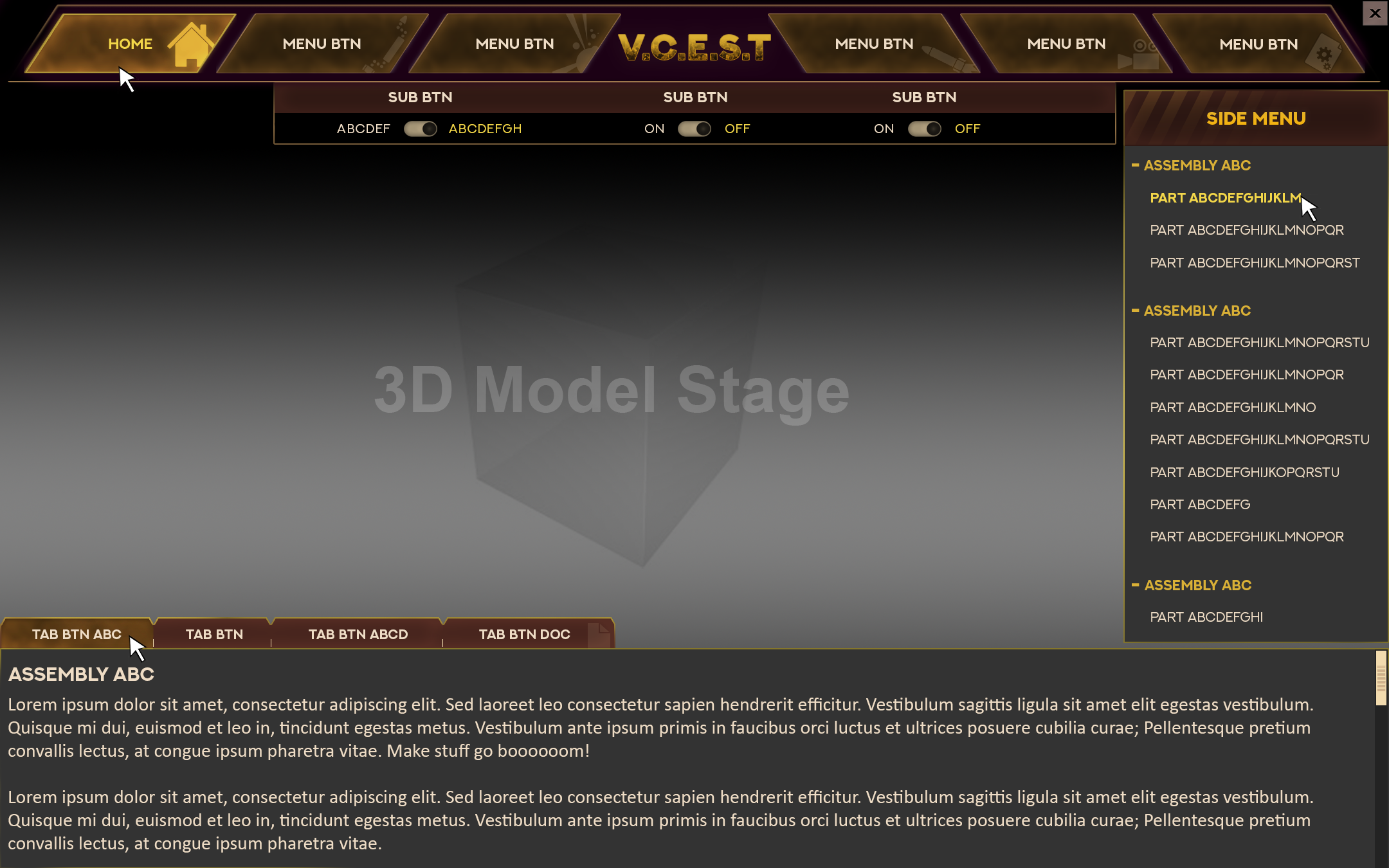 PIRA: ORL2023040065
PIRA: ORL2023040065
Enhancing 3D Model Interaction
with VCEST Software
For the VCEST software project at Lockheed Martin, I assumed the roles of Project Lead, User Experience (UX) Designer, and User Interface (UI) Developer. Through collaborative discussions with representatives from the target end user group, meticulous user testing events, and iterative design processes, I aimed to create a seamless and intuitive user interface that aligns with users' goals and motivations. The software focused on the interaction with 3D models, enabling users to comprehend weapon system layouts, components, materials, videos, rendered animations, and infographics.
Key Responsibilities and Achievements
Translating Requirements into Design: I meticulously analyzed and interpreted contractual requirements, translating them into a comprehensive software design and defining crucial features that aligned with the client's needs.
Guiding Development According to Standards: I led a team of designers and software engineers, ensuring adherence to the company's software standards, industry best practices, and Design Assurance (DA) guidelines throughout the development process.
Documentation and Test Readiness: I authored essential documentation including the Software Requirements Specification (SRS), Software Test Description (STD), and Software Test Plan (STP). This laid the foundation for a successful journey through Formal Test Readiness (TTR) and Product Verification and Validation events.
Leadership and Collaboration: As a team leader, I provided direction and guidance to designers and software engineers, fostering a collaborative environment where innovative ideas could flourish.
Agile Development and Jira Integration: The software was developed in an Agile environment, with Jira as our project management tool. This allowed us to iterate quickly, respond to changing requirements, and ensure that our development aligned with the evolving needs of the project.
Large-Scale Presentations: I delivered compelling and informative large-scale presentations that effectively showcased the software's development progress, features, and capabilities. These presentations were instrumental in garnering support and enthusiasm from stakeholders.
Research and Discovery: To gain a comprehensive understanding of users' expectations, I engaged in in-depth conversations with user group representatives. This involved identifying their goals, pain points, and underlying motivations for using the software. This qualitative research provided the foundation for shaping the information architecture and design direction.
User Testing and Feedback Analysis: User-centricity was at the core of this project, and thus, I conducted user research and organized user testing events with a cross-section of the target audience. Their interactions with the software were observed and documented, yielding invaluable feedback. This feedback was carefully analyzed and recurring themes were identified. Based on user feedback, I iteratively refined the user interface and software wireframes. This process involved creating mockups and prototypes that aimed to streamline user workflows.
Through my multifaceted role, I successfully led the development of the VCEST software, transforming the way users interacted with 3D models, animations, and infographics. The final design encapsulated a harmonious fusion of user expectations, industry best practices, and creative innovation. The user interface was intuitive, presenting complex functionalities in an approachable manner. Distinct visual elements, consistent typography, and a coherent color palette contributed to the overall aesthetic appeal. The software received positive feedback during Formal Test Readiness and Verification and Validation events, highlighting its robustness and functionality.
This project not only showcased my abilities in design, development, and leadership but also demonstrated my capability to align technical work with business requirements and effectively communicate complex concepts to diverse audiences.
